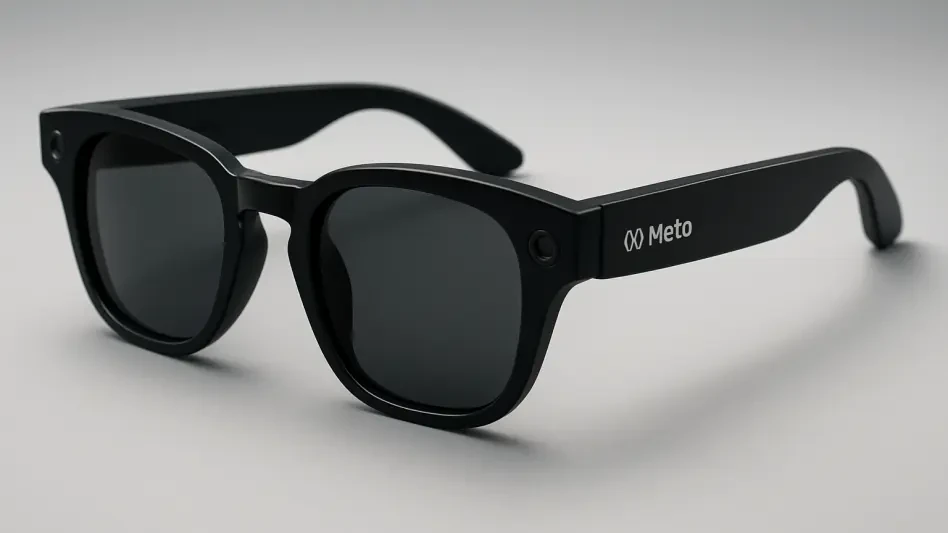In a world where wearable technology promises to redefine daily interactions, Meta’s latest unveiling of AI-powered Ray-Ban smart glasses at this year’s MetaConnect keynote was anticipated to be a groundbreaking moment for the company, but it turned into a public spectacle of technical failures. Instead, the event left attendees and online viewers stunned due to connectivity issues and AI missteps during the live demonstrations led by CEO Mark Zuckerberg, exposing vulnerabilities in a product hyped as the future of personal tech. This debacle not only raised eyebrows but also sparked a broader conversation about the readiness of AI-driven wearables for mainstream adoption. As the dust settles, questions linger about whether Meta can recover from this misstep and deliver on its ambitious vision, or if these glitches signal deeper issues with the technology itself.
Unveiling Gone Awry
Technical Mishaps on the Main Stage
During the highly anticipated keynote, Meta’s attempt to showcase the capabilities of their new Ray-Ban smart glasses crumbled under the weight of persistent technical errors. Mark Zuckerberg, leading the presentation, encountered a frustrating failure when a WhatsApp video call refused to connect, resulting in uncomfortable pauses and hasty apologies to the audience. Similarly, a live cooking demo with a popular content creator took an unexpected turn when the AI misinterpreted the recipe’s progress, revealing flaws often referred to as “hallucinations” in AI systems. These errors painted a picture of a product unprepared for the spotlight, casting doubt on its reliability for real-world use. The public nature of these failures amplified their impact, turning what was meant to be a triumphant reveal into a moment of embarrassment for a company known for pushing technological boundaries.
Immediate Fallout and Public Perception
The aftermath of the keynote saw a swift reaction from both the tech community and casual observers, with social media platforms buzzing about Meta’s onstage blunders. Many questioned how a company of this stature could overlook such glaring issues during a critical presentation. The visible frustration during the demos suggested a lack of rigorous testing, or perhaps an overconfidence in the technology’s readiness. This incident risked tarnishing the reputation of a product that Meta has heavily invested in as a cornerstone of their wearable tech strategy. While some defended the company, arguing that live demos often carry inherent risks, the overwhelming sentiment leaned toward skepticism. For potential consumers, these mishaps could translate into hesitation, especially given the steep price points of $379 for the base model and $799 for the display-equipped version, making reliability a non-negotiable expectation.
Corporate Response and Future Implications
Meta’s Defense of the Demo Failures
In the wake of the disastrous presentation, Meta’s CTO Andrew Bosworth took to social media to address the concerns, framing the failures as situational rather than indicative of deeper flaws in the smart glasses. He attributed the issues to a unique combination of factors, including an unintended activation of the “Live AI” feature across all devices in the venue due to inadequate crowd testing protocols. Additionally, a self-inflicted server overload and an unforeseen bug were cited as culprits behind the connectivity problems. While these explanations aimed to reassure stakeholders that the product itself remained sound, they also highlighted a lack of foresight in preparing for such a high-stakes event. Critics, however, remain unconvinced, suggesting that if these issues arose in a controlled setting, everyday users might face similar frustrations, potentially undermining trust in the technology at launch.
Long-Term Challenges for AI Wearables
Looking beyond the immediate incident, the broader implications for Meta and the AI wearable industry come into sharp focus. The recurring challenge of delivering seamless, accurate user experiences continues to plague manufacturers, as evidenced by persistent AI inaccuracies like hallucinations that disrupt functionality. Meta’s experience serves as a cautionary tale for others in the space, emphasizing the need for robust testing and realistic expectations before public unveilings. Despite the setback, early feedback from journalists who tested the glasses outside the keynote setting has been surprisingly positive, hinting that the core technology might hold promise if execution improves. This dichotomy between demo failures and hands-on impressions suggests that while the path forward is fraught with obstacles, there remains potential for redemption if Meta can address these reliability concerns swiftly.
Steps Toward Recovery and Trust
Reflecting on the events that unfolded, Meta faced a significant public relations challenge with their smart glasses debut, as the technical shortcomings overshadowed the innovation they aimed to highlight. Moving forward, the company must prioritize transparent communication and rigorous quality assurance to rebuild confidence among consumers and investors alike. Implementing comprehensive testing under varied conditions could prevent future embarrassments, while offering clear updates on how issues are being resolved might mitigate lingering doubts. Additionally, leveraging the positive early impressions from journalists could help shift the narrative toward the product’s strengths. As the wearable tech market grows increasingly competitive, Meta’s ability to learn from this stumble and deliver a polished product will be crucial in determining whether their vision for AI-infused glasses can ultimately reshape how technology integrates into daily life.








